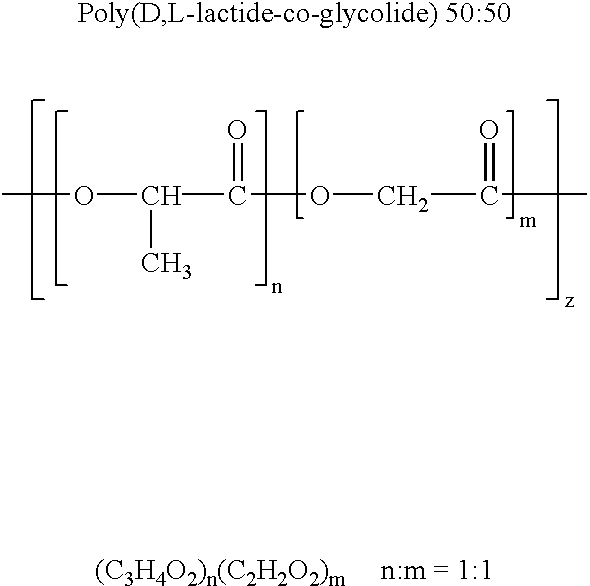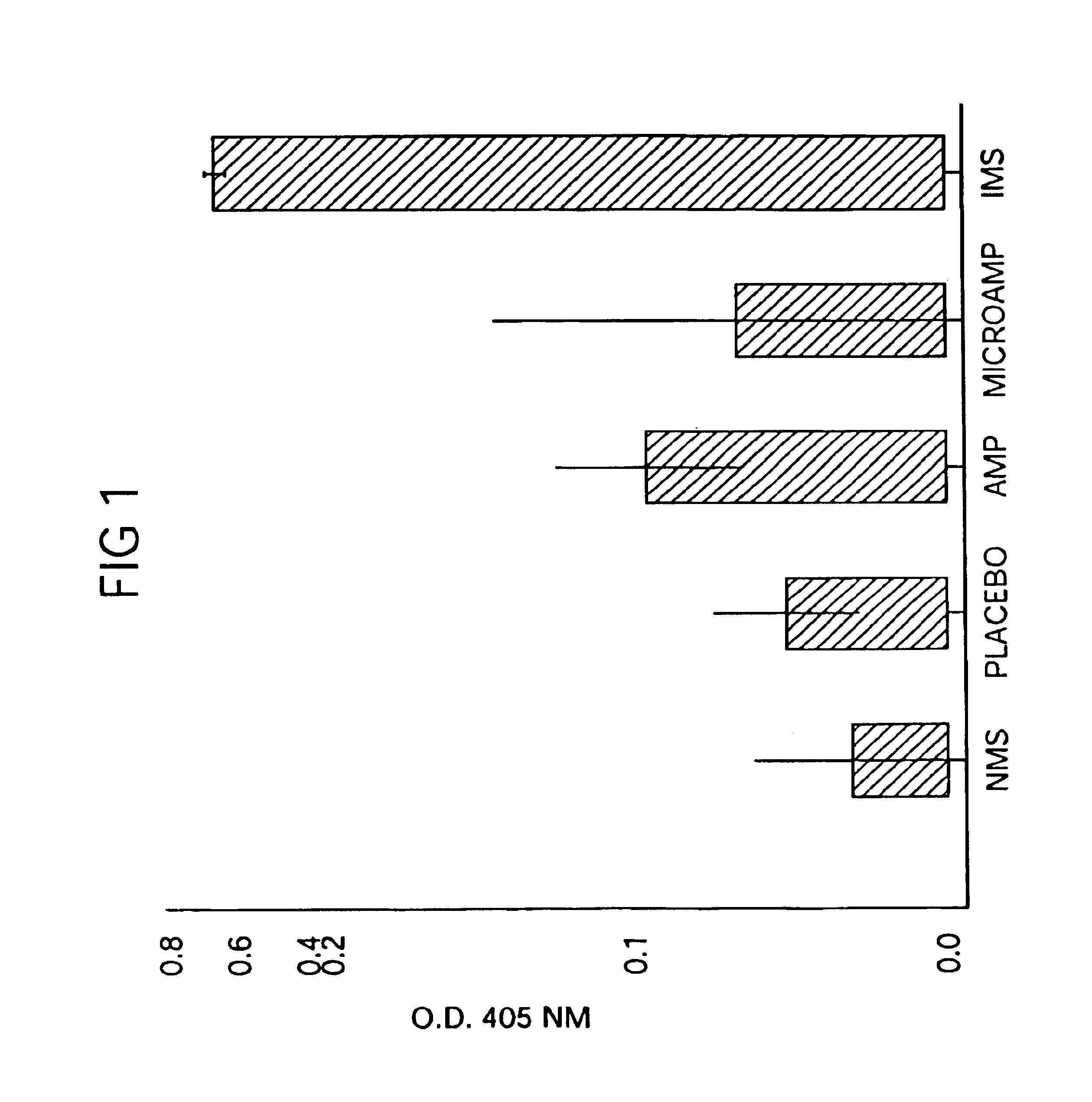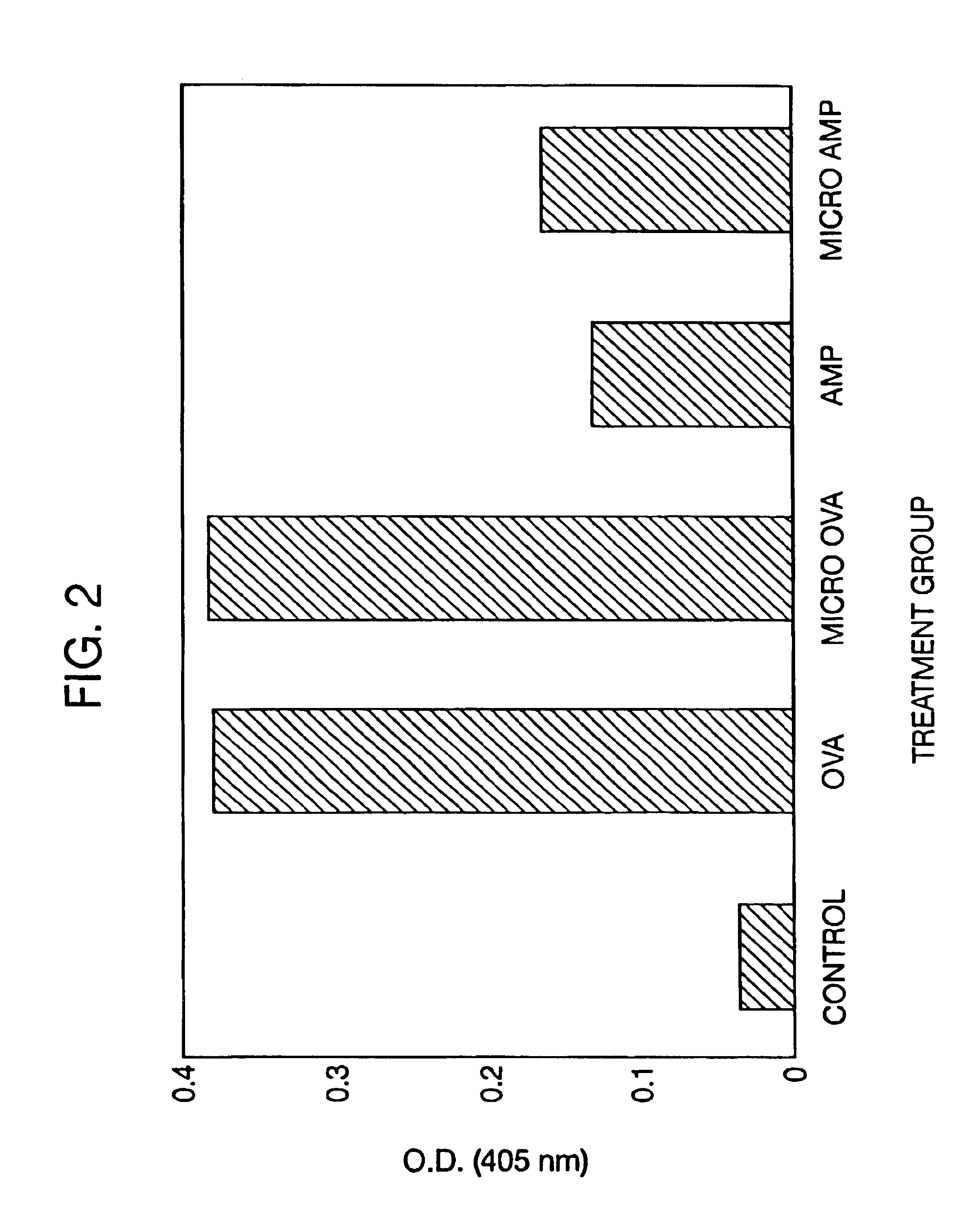Therapeutic treatment and prevention of infections with a bioactive material(s) encapuslated within a biodegradable-bio-compatable polymeric matrix
- Summary
- Abstract
- Description
- Claims
- Application Information
AI Technical Summary
Benefits of technology
Problems solved by technology
Method used
Image
Examples
example 1
[0379]Osteomyelitis Model. The technique used to produce osteomyelitis was a modification of the procedure described previously by Norden. Briefly, New Zealand white rabbits (2.0-2.5 kg, each) were anesthetized with ketamine hydrochloride and xylazine and access to the medullary canal was gained by inserting an 18-guage Osgood needle (Becton Dickinson Corp., Rutherford, N.J.) into the right proximal tibial metaphysis. Through this needle was injected 0.1 ml of 5 Pharmaceuticals, Tenafly, N.J.) followed by injection of approximately 5×106 CFU of S. aureus ATCC 6538P. The hole in the bone was sealed with bone wax and each animal received a single subcutaneous injection of 3-ml TORBUTROL™ (A. J. Buck, Hunt Valley, Md.) for postoperative pain control. Antibiotic therapy was then initiated either immediately or was delayed for 7-days as described in detail below.
example 2
[0380]Immediate Antibiotic Therapy. The initial experiment was designed to evaluate the efficacy of local therapy with microencapsulated ampicillin for the prevention of experimental osteomyelitis. A total of 31 rabbits were infected in the right proximal tibia with sodium morrhuate and S. aureus and treatment was initiated immediately as follows:[0381]Group A (n=6) received three daily subcutaneous injections (75 mg / kg / day) of aqueous sodium ampicillin (Polycillin-N™, Bristol Laboratories, Syracuse, N.Y.) at 8-hour intervals for 14 consecutive days;][0382]Group B (n=7) received a single intramedullary injection of 100 mg of microencapsulated ampicillin containing an equivalent of 30.7 mg of ampicillin anhydrate. The microcapsules / spheres were suspended in 0.2-ml of the injection vehicle) and were then injected into the medullary canal through the same needle that was used to inject the sclerosing agent and bacteria;[0383]Group C (n=4) received a single intramedullary injection of 0...
example 3
[0386]Delayed Antibiotic Therapy Without Debridement. In the second experiment, a total of 30 rabbits were injected in the right proximal tibia with sodium morrhuate and S. aureus and the infection was allowed to become established for 7-days. On Day 7, the animals were reanesthetized and an incision was made over the patellar tendon to expose the tibial tuberosity. A 5-mm drill hole was made in the tibial tuberosity and a trocar, measuring approximately 15 centimeters in length, was inserted into the medullary canal to obtain a marrow specimen for culture. The animals were then randomly assigned to the following treatment groups:[0387]Group A (n=8) received three daily subcutaneous injections of aqueous sodium ampicillin (75 mg / kg / day) at 8-hour intervals for 14-days;[0388]Group B (n =8) received an intramedullary application of 150 mg of microencapsulated ampicillin containing an equivalent of 45 mg of ampicillin anhydrate. The microcapsules were initially suspended in 0.2 ml of t...
PUM
| Property | Measurement | Unit |
|---|---|---|
| Size distribution | aaaaa | aaaaa |
| Fraction | aaaaa | aaaaa |
| Fraction | aaaaa | aaaaa |
Abstract
Description
Claims
Application Information
 Login to View More
Login to View More - R&D
- Intellectual Property
- Life Sciences
- Materials
- Tech Scout
- Unparalleled Data Quality
- Higher Quality Content
- 60% Fewer Hallucinations
Browse by: Latest US Patents, China's latest patents, Technical Efficacy Thesaurus, Application Domain, Technology Topic, Popular Technical Reports.
© 2025 PatSnap. All rights reserved.Legal|Privacy policy|Modern Slavery Act Transparency Statement|Sitemap|About US| Contact US: help@patsnap.com



